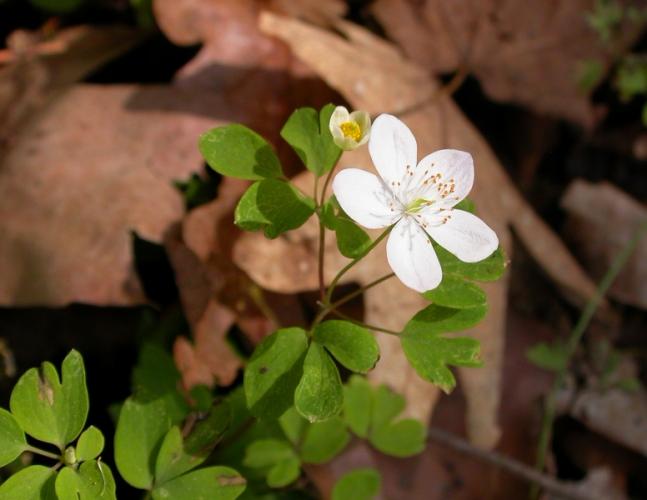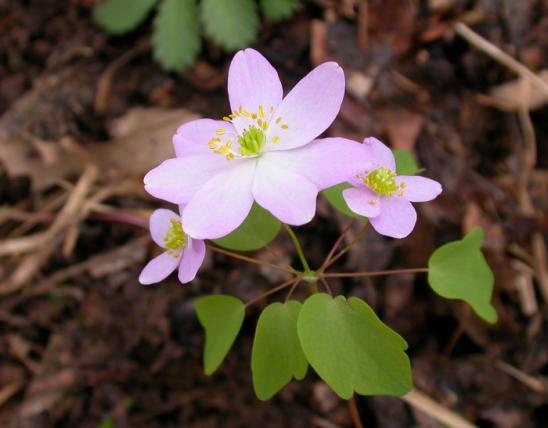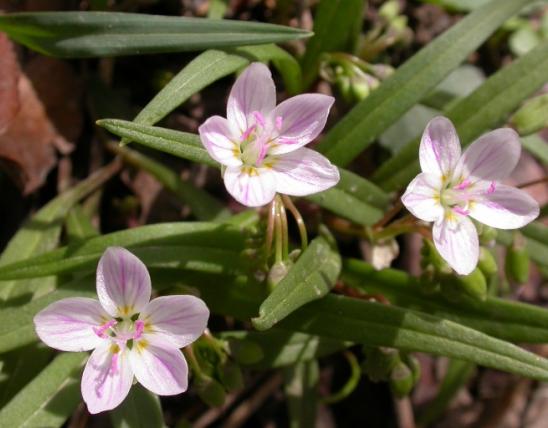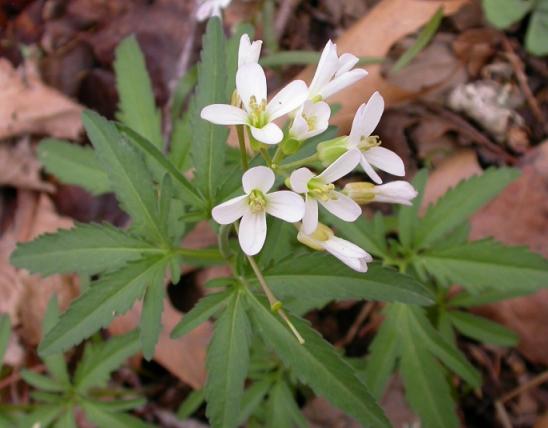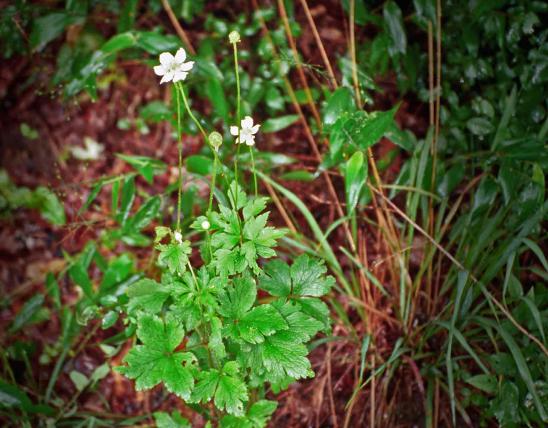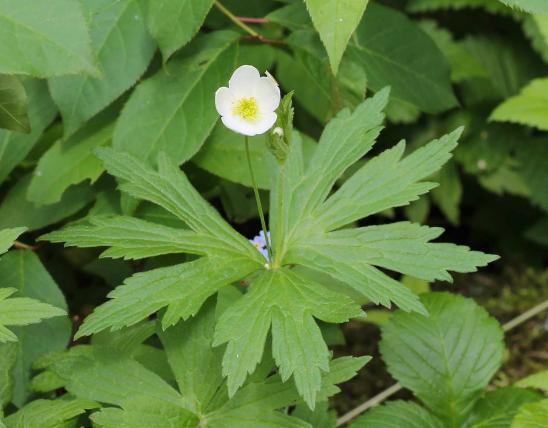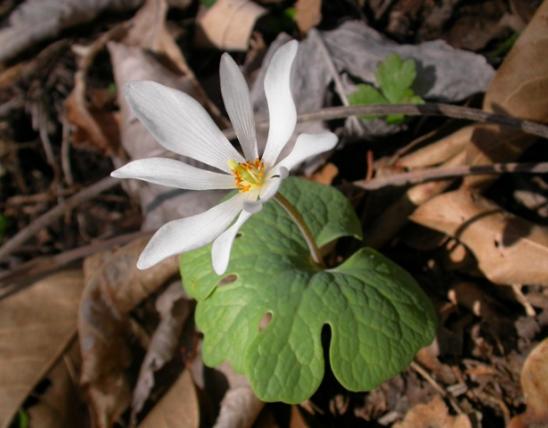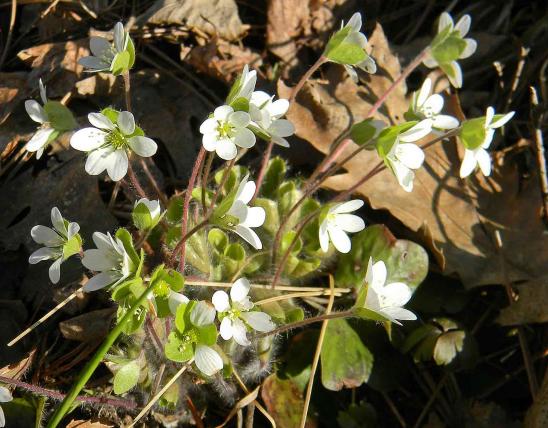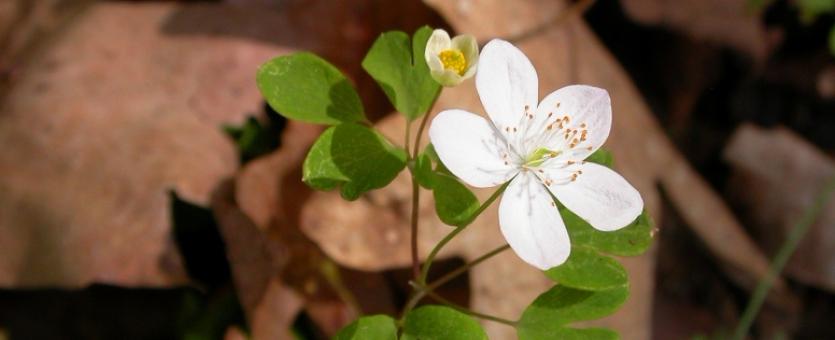
False rue anemone is a herbaceous spring wildflower, often in large colonies. Flowers arise singly on long stems from leaf axils; sepals 5, white. Blooms March–May. Leaves are present at the base of the plant but also on the stems with flowers. Leaves compound with 2 or 3 sections, these with rounded lobes.
Similar species: This flower is often confused with (true) rue anemone, Thalictrum thalictroides. That species, however, has only bracts on the flowering stems (not complete leaves); it often has more than 5 sepals, which are sometimes pinkish; it is usually only found singly; and it prefers wooded slopes to moist bottomlands.
Height: 5–8 inches.
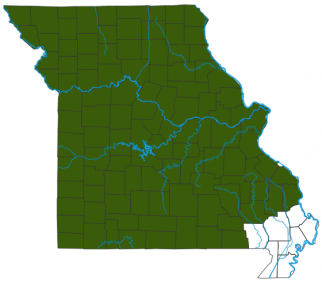
Statewide, except for the southeast lowlands.
Habitat and Conservation
Occurs mainly at bases of wooded slopes or in wooded bottomlands, sometimes in sunny situations. Often found in large colonies.
Status
Some botanists consider this North American plant and its relatives as less related to the Eurasian genus Isopyrum, so some references call this plant Enemion biternatum.
Human Connections
False rue anemone and "true" rue anemone present a bit of difficulty for the budding naturalist, but meeting the challenge of learning how to identify the two similar plants helps us understand botany, and our world, better.
Ecosystem Connections
Many animals nibble tender green plants in springtime. This and other woodland flowers require a forest habitat to survive, so they depend on the oaks, hickories, maples, and other trees that surround them.
